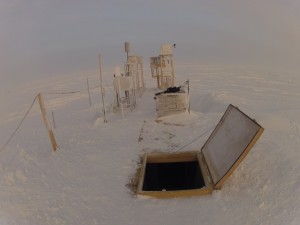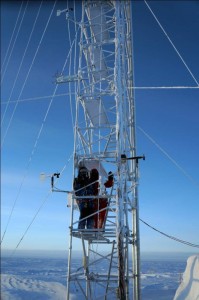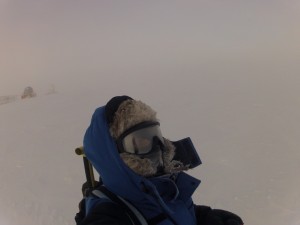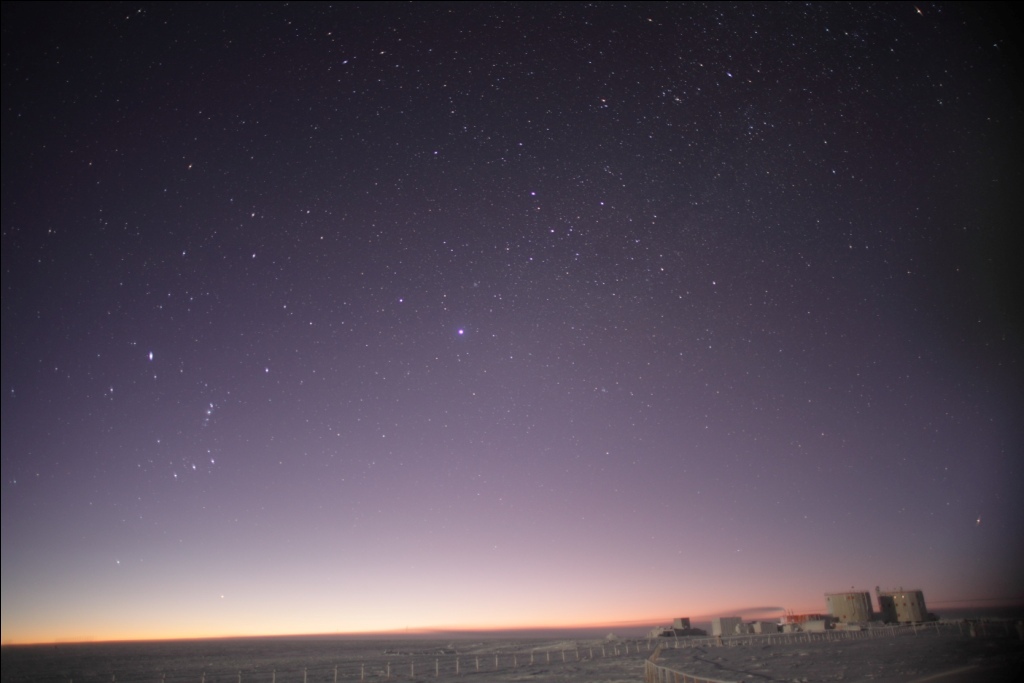Join Albane Barbero, this year’s French glaciologist down South in cold Concordia, for a guided tour of her icy garden. This text is based on her original blog in French:
Here is a guided tour of my ‘garden’. First of all you should know that it is incredibly large, our nearest neighbours are the Russians at Vostok, over 600 km to the North of Dome C. Around 1100 km to the South, our French and Italian neighbours live in the Dumont D’Urville and Mario Zuccelli stations. If you drew lines between Concordia Station and our neighbours on a map it would form a triangle with equal sides.
Despite having such a large garden we never venture further than 25 km from base in the summer months, from November to February. In the winter we stay even closer, never leaving the base more than 3 km behind us. We are actually quite lucky as each crewmember has their own outside shelter to work in and I am even luckier because I use four shelters of which two are exclusively for my use.
The glacio shelter is 900 m from the base and I share it with Elio the Italian glaciologist. It is a container turned into a hut with wood panelling. A large build-up of snow has formed around it over the years so we enter through the roof and climb down a ladder. The cabin is very noisy as it is full of pumps that are squeezed into 8 m2.
The snow shelter was installed last summer at 900 m from the base. The modified container is 8 m2 exclusively for myself. I spend my Friday afternoons here with my experiments. It makes a nice change to be alone from time to time as opposed to the base where 15 of us live.
The Helene shelter is a small cabin and the only one that is not heated. On Fridays I start my afternoon here where I remove ice build-up from an instrument. To reach the instrument I have to climb up a ladder and must pay attention because it is quite slippery. If I hurt myself it would take some time before my colleagues would come to my aid.
I share the American tower shelter with Simonetta, the Italian meteorologist, and Elio. We don’t spend much time there in general, it is mainly used to store the climbing gear for when we need to climb the tower. The shelter is full of computers and other electronic equipment that monitor and command the instruments on the tower.
The American tower is not a shelter but a 45m-high structure that Simonetta and I climb ever Friday. We clean the instruments of ice and maintain them.
Concordia has other shelters that I do not use. The seismology cave is entered through the roof and leads into a long tunnel under the snow. In the summer the sun shines through and it is lit up in blue. The shelter has instruments that detect Earth’s movements.
The AstroConcordia is a platform that looks a bit like the M of a famous hamburger chain. In the middle is a small cabin that controls the telescopes and other astronomical equipment.
This is the list of equipment and clothes I wear before going outside to my garden:
- A good pair of tights (or even two)
- High-neck shirt
- Fleece vest
- Skiing trousers
- Skiing jacket
- Ski socks
- Boots (but much warmer than your average boots)
- Undergloves
- A second pair of thicker undergloves
- Gloves
- A pair of earmuffs
- A fleece balaclava
- A personal hat so we can recognise each other under all these clothes
- A transparent mask (there is no Sun most of the time)
- A torch
- A two-way radio
Not a single piece of skin must be exposed or we risk getting frozen. I don’t put on my mask any more as it fogs up too quickly. I take care to only let my eyes in between the clothes. It is important to never forget the torch, without a fixed point to focus on it is almost impossible to walk in a straight line in the snow.
The most amazing thing about my garden is that when I look up the scenery is always different. Even though the countryside stays the same the sky is always changing!










Discussion: 3 comments
In such a harsh environment, reading that you call your surroundings “your garden” is very sweet..maybe we should call you Amélie rather than Albane? 🙂
it’s a fantastic ice garden, good luch. I’m Guatemalan and I can’t go, however I wanna go.
Hahaha, thank you very much!
If I had to compare my house and my garden with what I have in France, it sure is very different, I might call it my castle and my park in Antarctica instead!
Thanks again for reading my post!